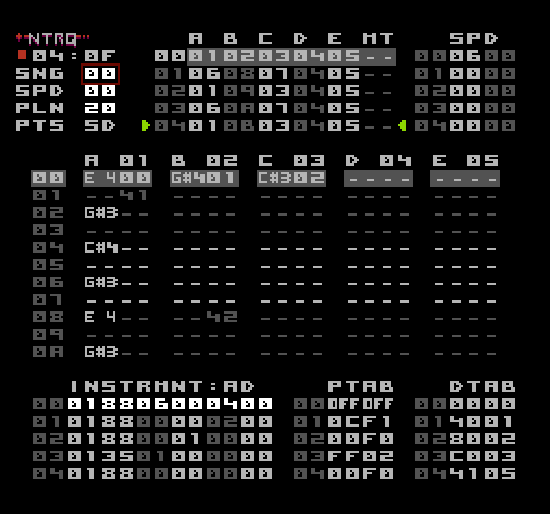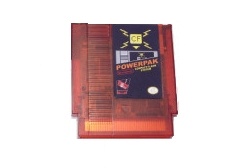Retro chip music appeal and the occasional Super Mario Bros. game aside, you probably think of the Nintendo NES and Famicom system as something collecting dust at garage sales. You probably don’t think of this NES running as a self-contained music production workstation, syncing to MIDI and Android, or exploiting new software for producing elaborate musical sequences, drum and bass lines. Think again.
What might to outsiders seem like the nostalgic draw of video music has become something else entirely – the NES is taking its place as a serious, studio synth.
Via Keaton Shurilla (Theta_Frost) comes a number of helpful updates on recent developments for the NES.

Your NES, a music workstation
Pulsar is the next-generation successor to NTRQ, a tracker for sequencing and synthesizing sounds directly on the NES. You don’t use a computer; you do all the work directly on the game system. (NTRQ image above; see the video of Pulsar at top.) Full details:
Pulsar: Audio at NTRQ blog
Your NES, a drum and bassline machine
PR8, from the creator of Pulsar and NTRQ, turns the NES into a groovebox. It’s almost like having an NES take on ReBirth, complete with bass and drum pattern generators. Again, it’ll run directly on the NES system, making an NES a silly-cheap instrument you can add – and as the video hints, the results may not sound anything like retro game music if you don’t want them to.
![]()
Rihanna Rude Boy NES 8-Bit Cover from thefox // Kalle Immonen on Vimeo.
Your music, on NES cartridges
PornoTracker is the latest PC-based tracker solution. Here, the idea is a bit different: sequence your musical ideas from the comfort of your computer (in this case, Windows-based), then export to a format that can be played on cartridges. PornoTracker as a result has some powerful musical features, but it still lets you repurpose vintage NES systems for playback. If you think about it, that’s a pretty great deal: you save toxic hardware from the landfill, and at an absurdly cheap price.
PornoTracker (the Finnish developer has other crazy projects, like custom libraries and his own NES game engine)
PornoTracker write-up from our friends at TRUE CHIP TILL DEATH (ed.: Peter Swimm)
DIY cartridges for antique game systems? In case you’re wondering how all of this is practical, you can thank the…

Flash memory on a cart
…PowerPak. This custom cartridge allows you insert convenient Compact Flash memory so you can run anything you can load from a computer onto an NES, no special hardware required. An upcoming update for the popular NES tracker Famitracker will mean extra sound expansions that the Powerpak can play, on top of those already supported. Updated: You can also play directly through the NES using the Arduino interface and Famitracker; now with the Powerpak, some Famicom cartridge soundsets can be emulated, too.
Your NES, connected via MIDI
Arduino NES-to-MIDI is an Arduino-based project for MIDI communication with the NES, and it’s open source (GPL). The result: connect your NES via MIDI without the need for proprietary hardware. This mercifully stands in for the abandonware MIDINES project. (Sadly, I regularly get comments on a years-old story with people wondering what happened to that.) I’d love to see the use of a dedicated, open source USB-MIDI project so that you wouldn’t necessarily even need a full Arduino board, since it’s overkill for the project. But as it stands, it’s already a terrific step.
Updated: For more on connecting to MIDI, don’t miss Andrew (Batsly Adams’) site:
Your NES, connected to an Android
Not music-specific, but it could be: there’s an Android project that makes use of the Arduino bridge, too. (Could be a good starting point for a wireless, Bluetooth-based solution.)
android-arduino-nes-controller
Game Boy? Game Man/Woman
The NES gives you some seriously grown-up, fun sounds on a dime. I think it’s an encouraging return to basics, all for the cost of some of those iPad cases. So, while the NES and PowerPak didn’t make our inexpensive holiday list, they sure could — or they could be a 2011 New Years’ Resolution. I’d love to hear what you do with them.
More Projects – Updated
Be sure to check out:
A build-your-own NES synth design, ready for live performance, by Jarek Lupinski, interfaces directly with 2A03 synth chip.
http://skrasoft.com/blog/ Dev Blog covers modular synth modules for using vintage synth chips, including the Pokey — brilliant!